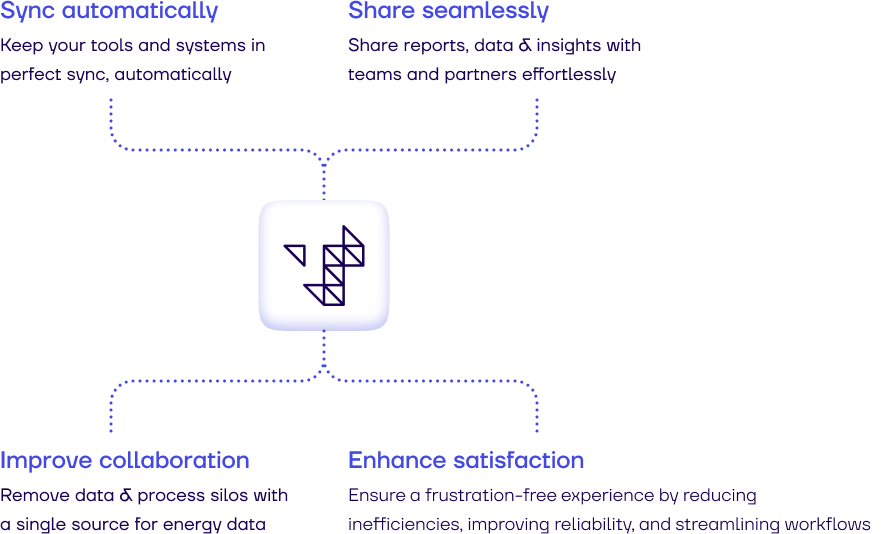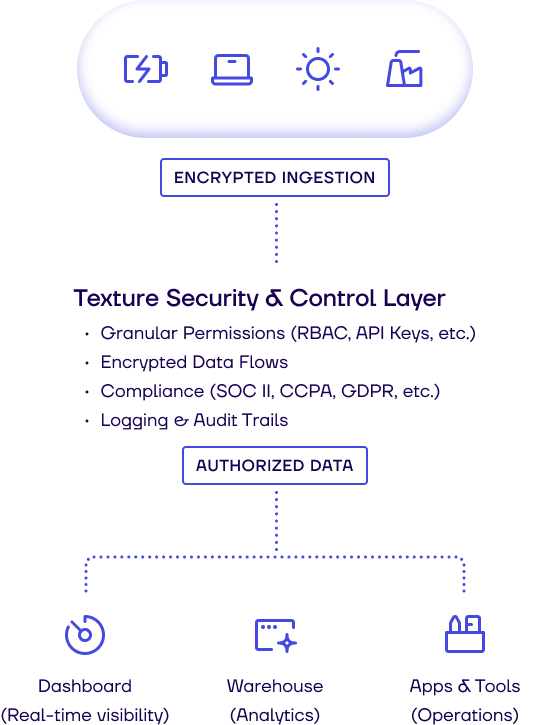The End of the FTP Era: Why Energy Data Sharing Needs a Modern Solution
#The End of the FTP Era: Why Energy Data Sharing Needs a Modern Solution
After hundreds of conversations, it’s become clear that in the energy industry, FTP (File Transfer Protocol) has long been the default method for sharing critical data between organizations. But as we enter an era of distributed energy resources (DERs), real-time grid management, and heightened cybersecurity concerns, this decades-old technology is showing its age.
Let's explore why FTP became ubiquitous, why it's no longer suitable, and what modern alternatives exist.
#The Rise of FTP in Energy
FTP became the de facto standard for energy data sharing for several practical reasons. In the early days of grid digitization, it offered a straightforward solution for utilities and energy companies to exchange monthly meter readings, billing data, and basic operational information. The protocol was:
- Simple to implement
- Widely supported across different systems
- Familiar to IT teams
- Adequate for periodic, small-volume data transfers
When your main concern was sharing monthly meter readings or quarterly reports, FTP served its purpose well enough. But the energy landscape has changed dramatically.
#Why FTP Can't Keep Up
The energy sector is experiencing unprecedented transformation. According to recent Bloomberg NEF data, the number of entities connecting directly to the grid has increased 4x in just five years, with 200M different energy assets now connected. This new reality brings several challenges that FTP simply wasn't designed to handle:
#1. Data Volume Explosion
Modern homes generate thousands of data points a month, no longer just a "monthly" meter reading. We believe with multi-tenancy this will reach over 150,000,000 data points per month.
This dwarfs traditional data volumes and almost any other industry. Compare this to just 26 monthly credit card transactions per person and how much we can do with that.
FTP servers struggle with large file transfers and often fail during big data dumps.
#2. Real-Time Requirements
- Grid operators need instant visibility into DER status and demand curves
- With FTP being batch processed, utilities cannot factor in demand side data to their generation and distribution decisions
- Demand response programs require immediate data access
- FTP's batch-oriented nature creates dangerous lag times
- Monthly or even daily CSV uploads are no longer sufficient
#3. Security Vulnerabilities
- FTP transfers are often unencrypted
- Credentials are frequently shared and rarely rotated
- No granular access controls or audit trails
- The average energy company has a security rating of C or below
#4. Compliance Risks
- Modern regulations require strict data governance
- CSV files have no validation for types, so you can put "banana" in a column meant for a date.
- FTP lacks built-in compliance features
- No standardized way to handle GDPR, CCPA, or SOC 2 requirements
- Limited ability to track and prove data lineage
#Real-World Impact
Let's look at some common scenarios where FTP is still used and how they could be modernized:
#Behind-the-Meter Data Sharing
Current Process:
- Solar installers manually export CSV files
- Files uploaded to FTP server monthly
- Utility manually downloads and processes data
- No validation until after import
- Delays in detecting problems
Modern Alternative:
- Real-time API connections
- Automated data validation
- Instant error notifications
- Secure, encrypted transfers
- Granular access controls
#Demand Response Programs
Current Process:
- Aggregators compile participant data into CSVs
- Files uploaded to utility FTP servers
- Manual processing creates delays
- Limited visibility into data quality
- No real-time participation tracking
Modern Alternative:
- Live data streaming
- Automated participant management
- Real-time performance monitoring
- Secure third-party access
- Audit trails for all activities
#The Path Forward
Modern platforms like Texture offer a more sophisticated approach to energy data sharing:

#Security & Compliance
- Infrastructure built according to SOC 2 standards
- Role-based access control
- Encryption at rest and in transit
- Comprehensive audit trails
- Automated compliance reporting

Texture-data-and-controls-diagram
#Real-Time Operations
- Live data streaming
- Automated validation
- Instant anomaly detection
- Bidirectional communication
- API-first architecture
#Scalable Architecture
- Handles millions of data points
- Automatic scaling
- High availability
- Disaster recovery
- Performance monitoring
The energy transition is accelerating, with more distributed resources, more market participants, and more data than ever before. Continuing to rely on FTP for critical data sharing isn't just inefficient—it's becoming actively dangerous. As the industry evolves, modern data platforms aren't just nice to have; they’re essential infrastructure for the future of energy.
The question isn't whether to move beyond FTP, but how quickly we can transition to more secure, scalable, and real-time solutions. The technology exists today to make this transition smooth and beneficial for all participants in the modern energy ecosystem.
#Ready to Move Beyond FTP?
If you're ready to upgrade your energy data-sharing infrastructure, Texture can help. Contact us today to learn how our modern, secure, and scalable platform can future-proof your operations. Schedule a demo or reach out to our team to get started.